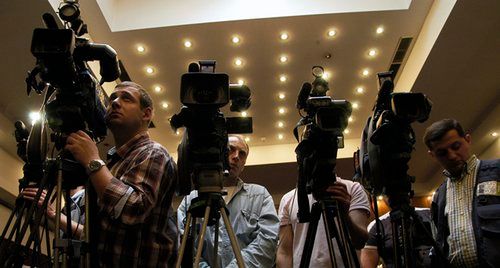
There is no such thing as completely unbiased reporting. Whether they want to or not, the news media are always giving us a perspective on issues that indicate how they think we should interpret them.
Take, for example, two recent front-page stories: on selective termination, the ending of one or more lives within a mother’s womb; and the so-called life on Mars story. Consider for a moment how the news media handled these stories. Many people picked up on the asteroid from Mars story through news reports on the radio and television and in the press. However, very soon after the story broke, the ‘spin’ or angle for the reports was to question the religious ramifications of the ‘discovery’. Before long, the story was being framed in the context of a ‘Does God exist?’ debate, with science once again being set up as the adversary of faith. The implication was, of course, that this new evidence, if not proof of God’s non-existence, was at least a serious challenge that needed answering. In reality, it was nothing of the kind.

The way in which the selective termination issue has been framed is also revealing, particularly when it comes to the television reports. They say that a picture can tell a thousand words; what it can also do is establish the way in which a news report is interpreted by an audience. In the majority of the television reports, the pro-life lobby were shown campaigning outside buildings such as courts or hospitals. What is the message behind these images? The buildings are symbols of authority and of the establishment — the pro-life campaigners are presented, figuratively and literally, standing on the outside of them both.
When it comes to expressing the view of the medical authorities, many reports show a professor inside an office, often identified by a caption to be a surgeon or medical specialist. They speak for the establishment. In contrast, the opinion of the campaigners is often recorded outside the building, with perhaps the noise of the campaigners in the background. Again, this underlines the popular interpretation that these people and views are outside the established order.
Such coverage is presented as objective, impartial and detached reporting, yet in reality it promotes the received, dominant view, and marginalizes those outside the status quo.
Naturally, the news media want to be seen as unbiased reporters of facts; but the reality is somewhat different. What is in operation here is something called metonymy. In the news media this is the process whereby one attribute of a subject is repeatedly used to represent the whole subject. In this case the image of the lobbyists standing outside an official building is symbolic. It conveys a distinct message to the perception of viewers without the need to use words of explanation.

This is a great benefit to news editors constantly looking for means to shorten their reports. As bulletins are reduced to minutes or even seconds, it is tempting to reuse such images which very soon become linked together in the viewers’ perception. After all, it is accurate, is it not? The camera does not lie and the significant point is that no one individual can be accused of misrepresentation. However, the pattern and constraints of news production and style make the likelihood of misrepresentation almost inevitable.
Effectively, the media can emphasize, amplify and ultimately caricature what they perceive to be the dominant voice, or opinion, within society. This has an effect on those who perceive themselves to stand outside of this group, as Christians often do. The German communications professor Elisabeth Noelle-Neumann produced a theory to describe this effect. The theory starts with the proposition that when an individual is aware that his opinions differ from the majority, he feels isolated and uncomfortable. This can be observed on a small scale in the context of peer pressure.

The theory goes on to argue that on any given issue, people are inclined to ask themselves, ‘What does everyone else think?’ If a person perceives that his opinion puts him in the minority, then he will be less inclined to speak out. And, the less those of the minority opinion speak out, the more the majority view becomes dominant. This very quickly leads to what Noelle-Neumann termed a ‘spiral of silence’, where the majority opinion becomes increasingly dominant, and the minority opinion becomes increasingly silenced.

What relevance does this have for the Christian? Two points should be noted. First, we should always be aware of the fact that the media are offering us a warped picture of reality, even when it comes to ‘reliable’ sources such as the ‘serious’ news media. We should be aware that, through subtle techniques, the messages we receive are always biased in favour of what is perceived to be the dominant voice, and consequently they are likely to be preserving the status quo. This is important to us because, as the two examples illustrate, the dominant voice will often run counter to the voice of God, heard through his Word and his Spirit.
The second point is that we should not allow ourselves to feel bullied into silence on an issue where the church should be speaking out. The Noelle-Neumann model helps us to see that, effectively, an illusion is maintained where (a) there are no valid opinions other than those perceived as the dominant ones; and (b) there is no way to effectively challenge the dominant view.

Public opinion, as represented to us by the media, is undebatable and unassailable. The truth is that we do have legitimate convictions and a voice. There is no reason why churches do not use the media more often to put their point across. Whilst this may be difficult with the national media, it is quite possible with the local and regional media. The local press and radio are often interested in hearing from parts of the local community, since it is this kind of local input that makes them different from the national media. Individual Christians, church groups and organizations can employ these opportunities effectively. When you do, think of some of the less obvious messages you may be putting across. It is only as and when we take the initiative that the different voice will be heard




